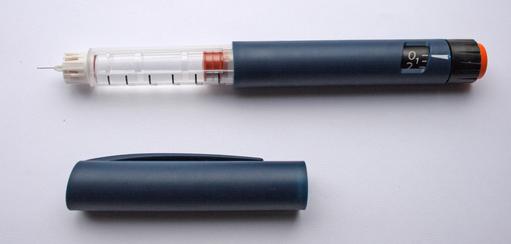|
It is a dangerous trend, especially among young people, which can lead to an array of physical and psychological consequences. For example, drinking in a state of malnutrition can predispose you to a higher rate of blackouts, alcohol poisoning, alcohol-related injury, violence, or illness. Drinking on an empty stomach allows ethanol to reach the blood system more rapidly, and raises your blood alcohol content often with dangerous speed. This can render you more vulnerable to alcohol-related brain damage. In addition, alcohol abuse can have a detrimental impact on hydration and your body's retention of minerals and nutrients, further exacerbating the consequences of malnutrition, and damaging your cognitive faculties. This can lead to short and long-term cognitive problems, including difficulty concentrating and making decisions, which ultimately can have a negative impact on academic and work-related performance. Drunkorexia also increases the risk of developing more serious eating disorders and alcohol abuse problems. As binge drinking is involved there is also a greater risk of violence, of risky sexual behavior, alcohol poisoning, substance abuse and chronic disease later in life.
Research
Although much of the research on drunkorexia is focused on university students, the condition is believed to be more widely spread. A challenge for researchers is the attitudes of university administrators and parents who are reluctant to admit that there is a problem either in their institutions or homes. The condition is often dismissed as a rite-of-passage. Notwithstanding, there have been a number of research studies, which suggest that drunkorexia is significant, growing fast and dangerous.
University of Missouri study
A 2011 University of Missouri study of the relationship between alcohol misuse and disordered eating, including calorie restriction and purging, suggests that drunkorexia is predominately a young women’s condition, which could affect their long-term health. The study found that 16% of respondents reported restricting calories to "save them" for drinking. 67% of students who restrict calories prior to binge drinking did so to prevent weight gain, while 21% did so to facilitate alcohol intoxication. 3 times as many women reported engaging in the behavior than men, and their stated motivations included “preventing weight gain”, “getting intoxicated faster” and “saving money”, which could be either spent on food or to buy alcohol. According to Victoria Osborne, Professor of Social Work and Public Health at the university, and lead author of the study, drunkorexia can have dangerous cognitive, behavioural and physical consequences. It also puts people at risk for developing more serious eating disorders or addiction problems.
Australian study
In an Australian context, a 2013 study surveyed 139 female university students, aged between 18 and 29 to examine compensatory eating and behaviors in response to alcohol consumption to test for drunkorexia symptomatology. 79% of respondents engaged in characterized drunkorexia behavior. The study also found that social norms of drinking, and the social norms associated with body image and thinness, impacted significantly upon the motivation for these behaviors.
University of Houston study
Findings of a University of Houston study on drunkorexia presented at the 2016 annual meeting of the Research Society on Alcoholism in New Orleans, found that 80% of the 1,200 students surveyed had at least one heavy night of drinking in the previous month, and engaged in drunkorexic behavior. The methods of purging prior to drinking include vomiting, use of laxatives or missing meals. The study also reported that the condition is not limited to the US, and is present in both men and women.
Benenden’s National Health study
Healthcare group Benenden’s 2016 National Health Report suggests that drunkorexia is gaining ground among young people in the UK, and creating concerns among healthcare professionals. According to the study, young people in the UK prefer to eat less in order to “save” calories for alcohol consumption. Of the 3,000 people surveyed, 2 out of 5 (41%), between the ages of 18 and 24 said they eat healthily only to look good, but are not concerned about their overall health. According to the report, “Pressure to be slim, an awareness of exercising calorie control, and peer pressure to drink large amounts of alcohol are all factors in this phenomenon”, adding that a growing number of men are following this trend.
Survey participants were also asked general questions about healthy lifestyles. “By and large, the findings highlight that the public is in denial about how much they think they know about healthy eating, they claim to be near-experts, but when drilling down to real-life examples, the vast majority of respondents failed to choose the right answer to simple diet-related questions, or the healthier option when offered the choice between everyday food and drinks,” the report found.
“There also seems to be a woeful lack of awareness about basic dietary advice, despite legislation and attempts by the food production and manufacturing industry. It isn't clear whether this is down to poor education or a lack of interest, but I think we need to rethink how we try and engage with people and try and encourage them to assume greater personal responsibility and accountability for their health," says Dr John Giles, Benenden’s medical director.
Traditional healthcare providers failing
Traditional healthcare providers continue to waste billions on failing traditional methods of engaging and educating patients. Increasing self-management of your health is relevant, especially as primary care resources are shrinking as the prevalence of drunkorexia is rapidly increasing. However, achieving effective education and self-management requires a fundamental transformation of the way healthcare is delivered. The majority of people living with drunkorexia regularly use their smartphones for 24-hour banking, education, entertainment, shopping, and dating. Health providers have failed to effectively leverage this vast and rapidly growing free infrastructure and people’s changed lifestyles to introduce effective educational support systems to enhance the quality of drunkorexia care, increase efficiency, and improve patient outcomes. Today, mobile technology is part of everyday life and people expect to be connected with their relevant healthcare providers 24-7, 365 days of the year from anywhere.
Takeaways
A necessary pre-requisite for effective healthcare education to reduce the burden of drunkorexia is the actual engagement of people with the condition. Once patients are engaged, education should inform and empower people, and provide them with access to continuous self-management support. This is substantially different to the way traditional healthcare education is delivered as it transforms the patient–educator relationship into a continuous, rich, collaborative partnership.
|





